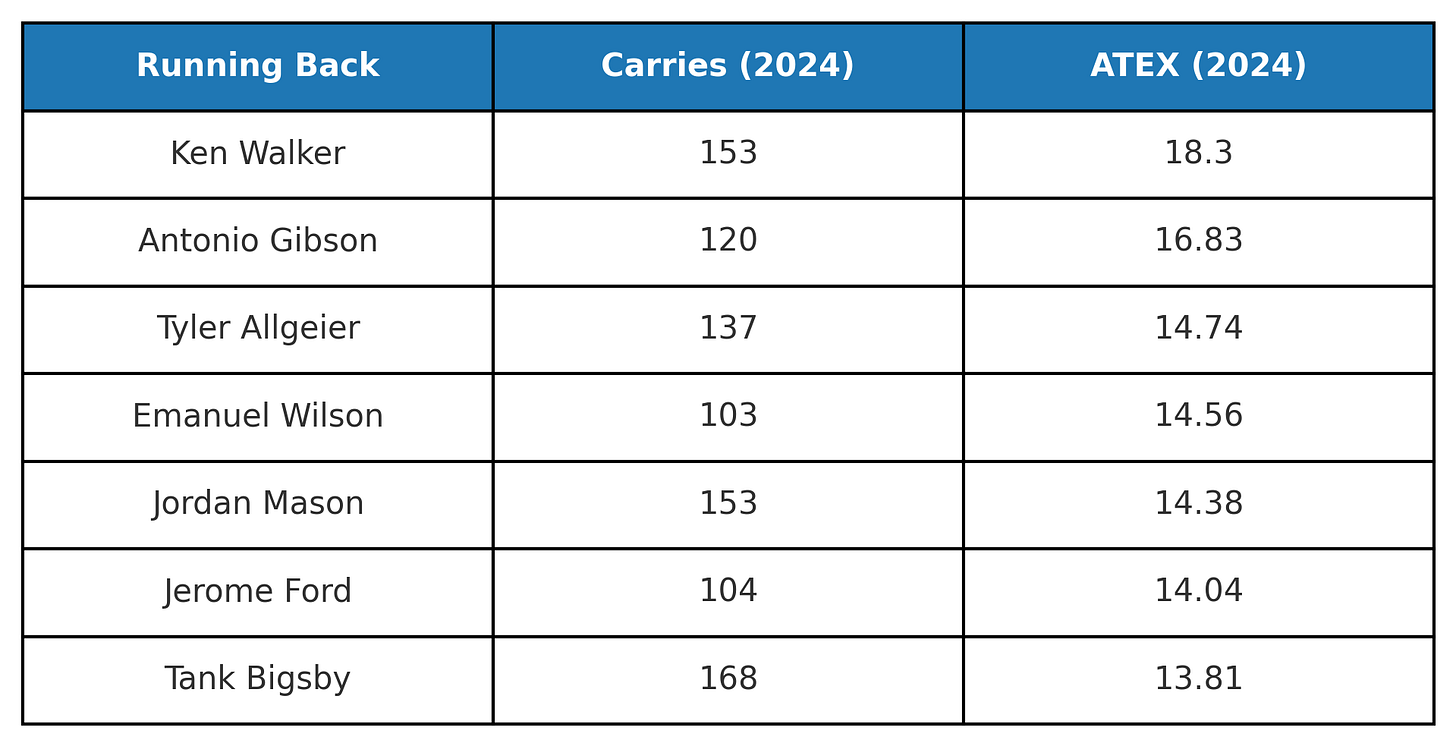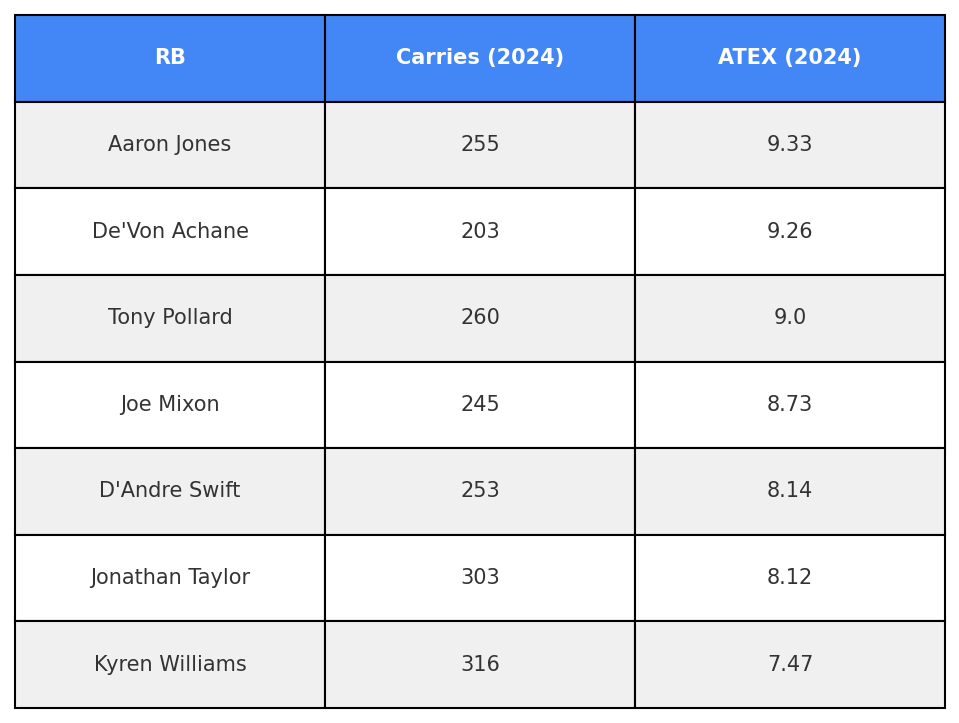New Running Back Stat: Introducing ATEX
This metric combines elusiveness and explosive-play ability for ball-carriers
The reports of the death of the NFL running back are greatly exaggerated.
OK, so I still wouldn’t draft one in the first round. But the 2024 season was truly a banner year for the position (mostly) thanks to Saquon Barkley and Derrick Henry.
Beyond those two freakazoids, there were 16 running backs who eclipsed the famed 1,000-yard mark, which tied 2019 and 2022 for the most in 10 years.
Seven running backs went for more than 1,200 yards on the ground, which tied 2016 for the highest frequency of such backs in over a decade.
I’m a firm believer ground-game production almost always hinges upon offensive line play. Because of that, we need to be evaluating running backs differently. Much more ball-carrier isolation — yards per carry certainly ain’t it.
There’ve been plenty of advancements in the analytics world within the NFL especially from some really smart media members in the last 10 years.
Here, I’m throwing my hat that ring with the creation of a new stat for the running back position I’m calling Avoided Tackle % + EXplosives (ATEX).
In simplest terms, it’s a weighted formula of a running back’s ability to force missed tackles AND generate long runs. That’s it.
Here’s the ATEX formula:
(Missed Tackle Forced % × 0.4) + (High Impact Tote % × 0.6)
MTF rate is self-explanatory. And HIT % is the amount of 15+ yard runs from a back divided by total carries during the regular season.
I gave slightly more weight to HIT% simply because a longer run is more impactful than an avoided tackle.
After its creation, I gathered ATEX for all running backs with 50+ carries in a given season from 2019-2024.
I then took all those ATEX scores and split them into six clear tiers—Elite, Strong, Above Average, Average, Below Average, and Poor.
The logical follow-up was to see whether ATEX is actually sticky from one year to the next. In other words, does a strong ATEX season tend to predict another strong ATEX season and vice versa? I computed the correlation coefficient between each pair of back-to-back seasons.
In plain English — this number tells us how well a back’s ATEX in one year predicts his ATEX the very next year.
Here are the correlation coefficients for ATEX in consecutive years from 2019 through 2024:
2019 → 2020: 0.425
2020 → 2021: 0.376
2021 → 2022: 0.552
2022 → 2023: 0.460
2023 → 2024: 0.441
AVERAGE correlation coefficient: 0.405 — which, from a Google search for non-data scientists like myself of “is .450 a strong correlation coefficient?” returns the following results:
“A correlation coefficient of 0.45 indicates a moderate positive correlation between two variables.
Here's why:
Direction: The positive sign (+) means that as one variable increases, the other variable tends to also increase.
Strength: The value of 0.45 falls within the range often associated with a moderate correlation. Many researchers interpret correlations between 0.30 and 0.50 (or -0.30 and -0.50) as indicating a moderate relationship.”
With correlation coefficients — and I promise this is as close to data scientist as I’ll get on TrapSheet — you want the number close to either -1 or +1. A score of 0 represents zero relationship between sets of numbers.
So, no, ATEX does not revolutionize the evaluation of NFL running backs. But a moderate correlation is something, and missed tackles and explosive runs are largely running-back driven events, where the back’s vision, cutting skill, and speed matter far more than whatever size lanes his blockers open for him.
Hopefully all this make sense.
Because now, let’s look forward — which backs are poised to explode with more work, and which high-volume grinders didn’t actually give their respective team much individually in 2024 and are moderately likely to regress this season?
Here are the ATEX Breakout Candidates for 2025, backs who achieved an ATEX in the Strong to Elite tier (13.5 or higher) on fewer than 175 carries last season:
Walker’s ATEX of 18.3 was the highest in the sample. And as a longtime Mason advocate, it’s awesome to see him listed here.
And for those wondering, Henry’s ATEX was 14.58 (of course it was), and Barkley, on a league-high 345 carries, still managed ATEX (11.54) in the Above Average tier.
On the flip side of all of that, here are the ATEX Empty Volume Regression Candidates for 2025, backs whose ATEX was in the Below Average to Poor (9.49 or lower) on more than 200 carries last season:
Some surprising names on this image, right?
There you have it. A new running back stat for your consumption in late June. Do with it what you will. And long live the NFL running back.






